In Part 1 of Exploring Sardinia, I shared with you some of the wonderful things there are to see and do in the better known, northern part of the island. Now I’d like to take you on a journey through the less familiar central and southern regions that are filled with hidden gems.
Central Sardinia
This region is very much off the usual tourist trail but here you’ll find some of the most spectacular countryside and lovely, unspoilt, isolated villages where local customs and traditions are kept alive.
There are many wonderful festivals that happen throughout the year across the island, and if you are lucky enough to be there are at the right time they offer a fascinating insight into Sardinian culture and traditions, much of which dates back many centuries. From colourful carnivals to religious processions, international music festivals to celebrations of local crafts and produce, there’s a huge range of events.
One of the most exciting festivals of the year is the S’Ardia Horse Race, held each July in the small village of Sedilo. There’s a procession in the village followed by a manic horse race around the church. It’s an amazing spectacle. As well as the procession and race itself, you’ll find plenty of interesting stalls and lots of delicious things to eat and drink including roast suckling pig, local red wine and mirto, a myrtle flavoured liqueur.
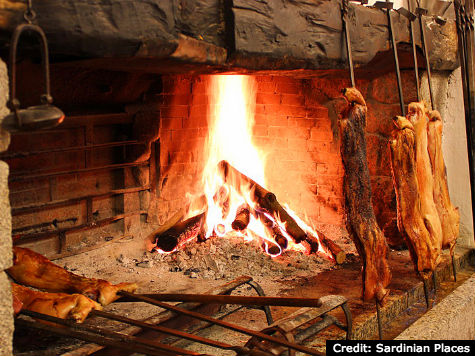
Roast Suckling Pig
The mountainous interior of Sardinia, known as Barbagia, is one of the least populated areas of Europe, and as such, has been able to preserve both its ancient traditions and the wild, natural beauty of its landscape. If you are visiting Sardinia in the autumn then be sure to check out Autumn in Barbagia, an annual celebration of the region’s arts, crafts and gastronomy that moves from one village to another, throughout September to December each year.
Oliena, in the heart of the Barbagia, is a picturesque town, surrounded by olive groves and almond orchards and it has quaint streets to explore and an interesting 15th century church. From Oliena you can go on guided tours of the archaeological site of Tiscali, a Nuraghic village deep in the mountains.
At Tharros, you’ll find the ruins of a Carthaginian and Roman city on the very tip of the Sinis peninsula. This is one of the islands best known archaeological sites.
The Museo della Vita e delle Tradizioni Sarde, in Nuoro, is the island’s most comprehensive collection of costumes, masks and handicrafts – a fascinating overview of the rural culture of the interior. It’s worth noting that every village throughout the island, has a different traditional costume, with magnificent hand stitched embroidery and locally made jewellery, that you’ll still see worn at traditional events.
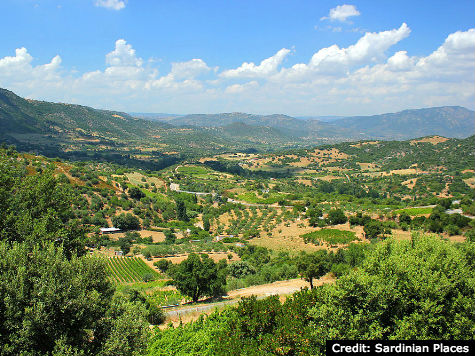
Stunning view of Central Sardinia
Central Sardinia is also great hiking country. The highlight of one of the best walks is the Gorropu Gorge, one of the deepest and most spectacular gorges in southern Europe.
To enjoy the spectacular countryside from the comfort of your car, drive the SS125 from Dorgoli near Nuoro, to the lovely little village of Santa Maria Navarrese on the east coast of the island. It’s a route popular with motorcyclists and the views of the mountains and then the coast are stunning.
As with Sardinia’s entire coastline, you’ll find some lovely beaches including the Piscinas dunes on the west coast, a stunning 9km long stretch of sandy beach and Cala Gonone on the east coast, a secluded beach with crystal clear water, backed by limestone cliffs, only accessible by boat or on foot.
Southern Sardinia
Less commercialised than the north of the island, in Southern Sardinia you’ll discover an incredibly wild and beautiful landscape with stunning beaches, magnificent mountain ranges, interesting wildlife and fascinating prehistoric sites.
Cagliari is the capital of Sardinia and the old town, perched on a hilltop, is well worth a visit. Explore the narrow streets, look inside the lovely cathedral and admire the views across the city to the sea and mountains beyond.
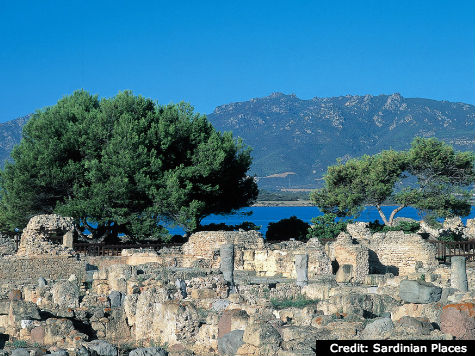
Ruins at Nora
At Nora there are Roman, Phoenician, and Punic remains in a spectacular and atmospheric setting by the sea, including an amphitheatre, the Temple of Tanit and Roman baths decorated with intricate mosaics.
On the road between Teulada and Santadi, you’ll find the Grotte di Is Zuddas. They are among the most beautiful natural caves on the island with vast displays of stalactites and stalagmites.
The islands of Sant’ Antioco and San Pietro are a haven for nature lovers. In Sant’Antioco you can also explore the catacombs and visit the Museum of Lace, where local women demonstrate the making of lace from ‘bisso’, a thread obtained from abalone shells. On San Pietro, Carloforte is a fascinating town and well worth a visit.
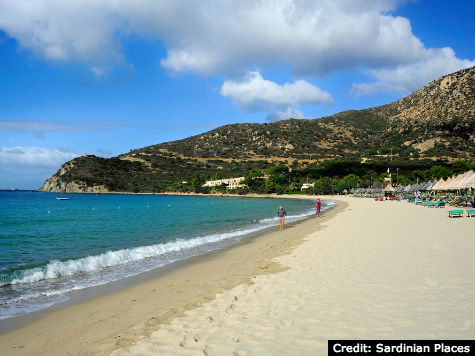
The coast around Villasimius is great for water sports including scuba diving and sailing, while nearby Costa Rei, on the south east coast, offers excellent swimming from flawless sandy beaches interspersed with secluded coves. Chia, west of Cagliari also has some superb beaches including Su Giudeu and Cala Cipolla.
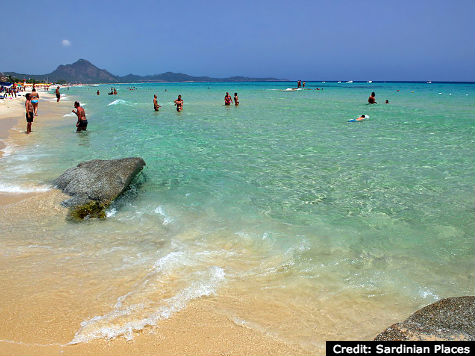
Costa Rei
There are some lovely walks in the area including the old Roman cliff path from the village of Pinus to Chia, the World Wild Life protected areas of Piscina Manna (Pula) and Monte Arcosu (Capoterra) and the woods and deer park of Is Cannoneris and Punto Sebera.
There are so many other lovely beaches, archaeological sites, wonderful walks…. far too many to list here, but one last thing I would highly recommend, wherever you are on the island, is a visit to a local market, such as the one found in Pula near Cagliari, every Tuesday morning.
Each town has a market, where you can pick up local produce, such as honey or perhaps a bottle of mirto, which make perfect souvenirs or gifts, and for a picnic on the beach perhaps some Sardinian cheese, fresh fruit and bread and of course, a bottle of local wine. What better way to spend a day?
All photographs are courtesy of Sardinian Places
Author’s Bio: Kathryn Burrington writes for Sardinian Places, part of Serenity Holidays, a privately owned, independent holiday company based in the UK. As well as blogging at The Sardinia Blog, Kathryn, also writes her own blog, Travel With Kat.
 BrowsingItaly Sharing stories, experiences, photos, tips and all things good on Italy
BrowsingItaly Sharing stories, experiences, photos, tips and all things good on Italy
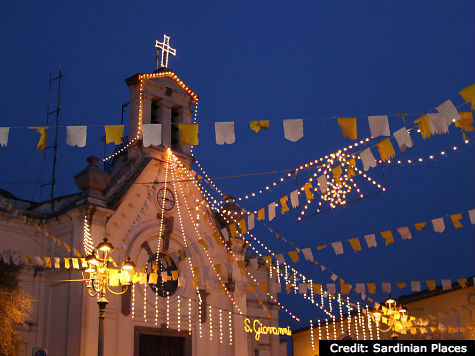
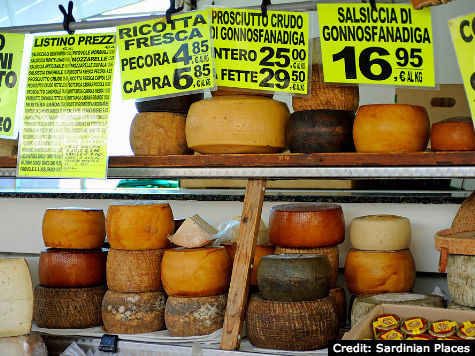

No comments
Pingback: Exploring Sardinia - Part 1 - BrowsingItaly
Pingback: 25 Favorite Photos of Italy on Instagram: Week of June 9, 2014 - BrowsingItaly
Pingback: 25 Favorite Photos of Italy on Instagram: Week of June 23 - BrowsingItaly
Pingback: 25 Favorite Photos of Italy on Instagram: Week of August 17, 2015 - BrowsingItaly